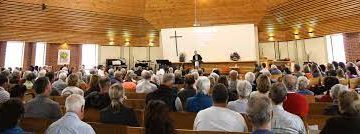BLUE GUM, TULIP & SPRING FESTIVALS
From the newsletter of the DAS (Dutch-Australian Society), the Tasman Telegraphs, I have noted the following:
[reporting of events the DAS usually lacked pertinent details, as if these facts were common knowledge. In some years there was simply no report. Below is not a selection, but every report)
In June 1974, Marianne Vandenberg was crowned Miss Community Charity Queen because she raised more than $500. The article implies that this fundraising event had already been run for several years, but does not mention where the crowning ceremony took place.
Marianne’s nominated charity was the Clarendon Children’s Home. The money raised was used to purchase three TV sets for the Home. For comparison, a fundraising champagne and chicken night on the MV Matthew Brady cost $4 per person.
In November 1978 there is a note:
“Every year at the Blue Gum Festival the [DAS] Ladies Club has a stand with second hand clothes and things. The proceeds of this go to charity. They would like to get some more clothes to sell, so anyone wanting to get rid of clothes that don’t fit anymore, because they went on a diet, or they ate too much and are fat, can ring Mrs Sluyters on 72 4355 or Mrs Mooy on 29 5210, to make arrangements to have it collected.”
No clue is given to where the Blue Gum Festival is held, or how long this has been going on, or where they learned their skills in diplomacy.
In October 1983 there is an advertisement for the Salamanca Arts Festival. The theme will be “International Village Fair Day” and it will run from 26/11 to 4/12, 1983.
How the DAS was involved in this? It is not recorded.
In October 1986, there is a report of an event in the Royal Tasmanian Botanical Gardens. It notes that there was a Tulip Festival there for the first time. No other details.
In October 1987 there is a report about the Tulip Festival (presumably in the RTBG). The festival was on the 27th of September (it was a Sunday), and it was 31˚C.
Tjipke Joustra and Annie Spaander, with the help of five locals, had picked 1000 tulips in Nubeena on the evening of the previous day (so that the flowers were closed). These blooms were sold in wrapped bunches from baskets by girls in Dutch costume.
Music was provided by the Tyroler Band, led by Ian McLaren. There was a display of Dutch dancing every hour on the hour. Ben Buissink had his popular Oliebollen stall.
What, how, who in Nubeena? Not known.
In October 1989 it was reported that the Tulip Festival was on the tenth of September. The Dutch Dance Group performed every hour on the hour from 11 – 3 (5 times). The DAS Social Committee organised tulips for sale in bunches and in pots, PLUS croquettes and oliebollen, and a doll for the raffle. The oliebollen were made in St John’s Fisher College.
The report concluded with “A big Thank You to the Board of Trustees for allowing us to stage the festival and to Tony May and his staff. The proceeds of $1436.75 would go to the costs of the Tasman Fountain.”
The festival in 1990 was held on the 30th of September. Highlights included Peter Cundall and Kevin Heinze as guest speakers on gardening matters, and Elizabeth Godfrey from Carefree Cooking speaking about the use of herbs in cooking. The Dance Group performed and attendance was estimated to be over 15,000 people.
In March 1992 the Dutch Village façade was used for the first time at the Rotary Club Garden Week in the DEC. It was built in conjunction with the Tasmanian Government Tourism Dept. It was also used at a Government House function, at a function in Melbourne, then at the Tulip Festival and finally at the Royal Hobart Show.
The Tulip Festival on the 27th of September 1992 featured Peter Cundall as a speaker, a Dutch barrel organ, a clog maker and poffertjes. There were two ice cream vans, oliebollen, croquettes and frikandellen, drinks and cake outlets. The event was officially opened by the Minister for Tourism (Peter Hodgman) and the Lord Mayor of Hobart (Doone Kennedy). There is a hint that the RTBG had not left the running of the show to the DAS, as in previous years, but that they made an attempt to have a larger slice of the pie. The TT reports “there were to our surprise so many other food outlets spread over the garden, and that meant we sold less than last year.” Proceeds were $2047.90.
This formula was repeated over the next few years. Reports are vague or not made, except for a line item in the financial reports. Proceeds in 1994 were $2371.89, and the following year $1373.26.
In 1997, the Tulip Festival was held, for the first time, over two days (27 + 28 September) and the DAS became just one of many attractions in a festival organised by the RTBG. Donations at the gate for the benefit of the RTBG, collected by DAS volunteers, was replaced by an entry fee which became increasingly ambitious to pay for an increasingly ambitious entertainment program. The DAS persevered for another ten years. The Dutch Village façade was put into storage after one final fling at the France to Freycinet Festival in Triabunna in 2006. It had become a burden, needing a crew of five men and a long truck to move the 7 panels (5m x 2m) and finding storage was always an issue. It had been well used around Tasmania, in New Norfolk and various centres along the North West Coast, but that’s another story. The glory days were gone, there was no project like the Tasman Fountain to inspire effort, the vigour of the members waned, and the next generation had other dreams and ambitions. Over the next several years the festival gained a new focus as a Spring Festival and the tulips disappeared.
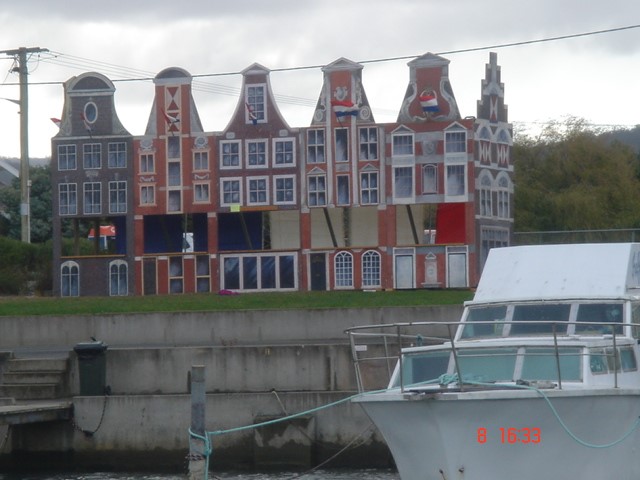
In this foto it was erected in Triabunna for a community festival.
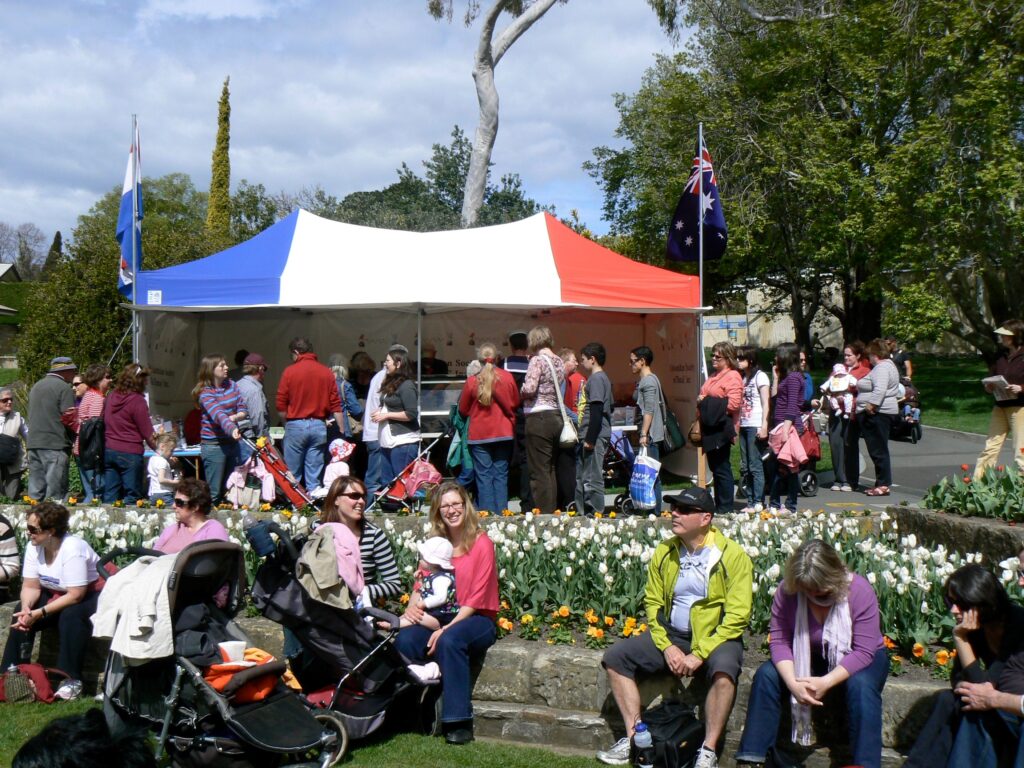
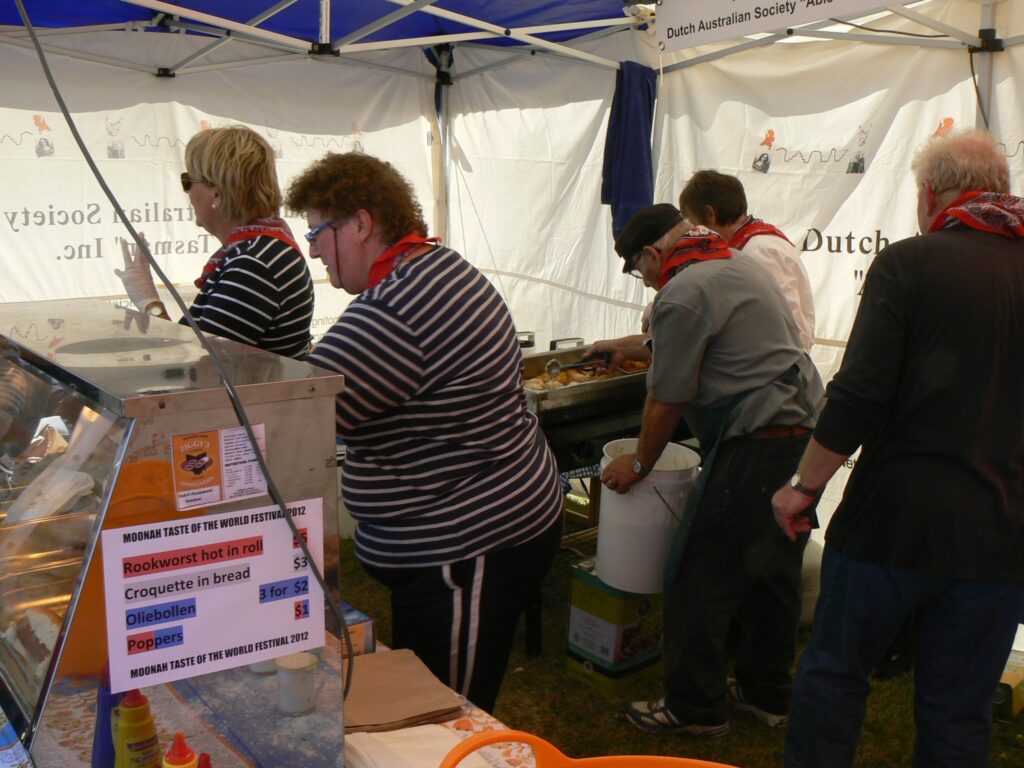
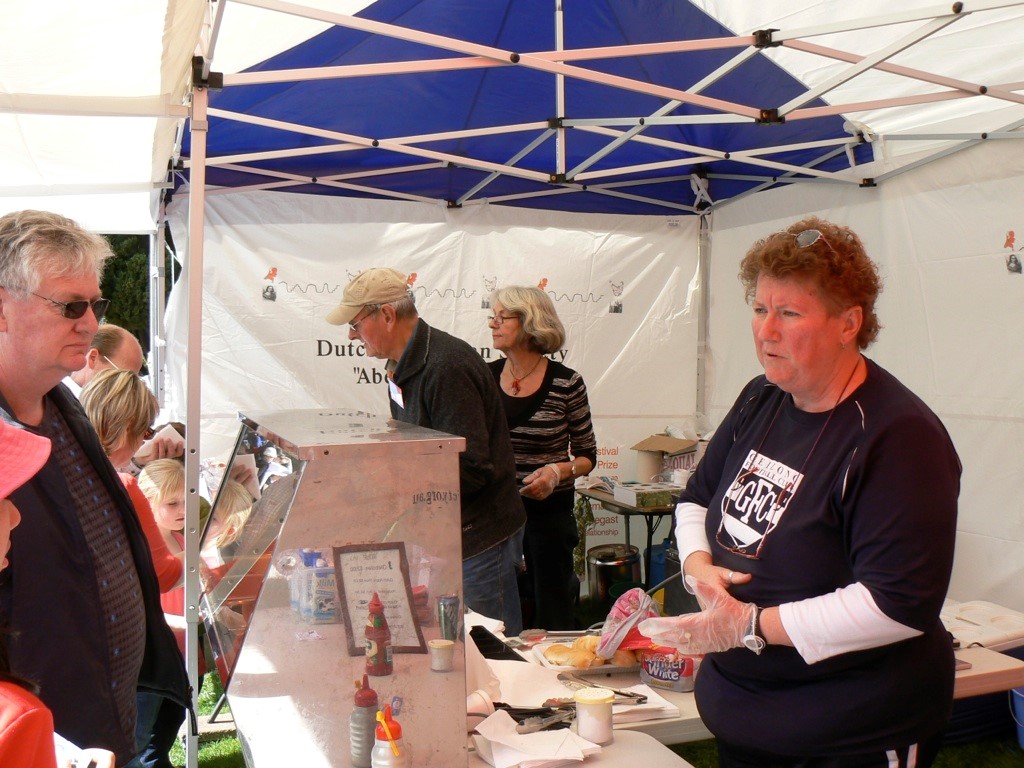
Postscript
Due to changing times and ageing volunteers, and lack of interest amongst the next generation, DAS faded away in the years 2012 – 2015. The strength and commitment to be involved in community events waned. Sinterklaas decided it was too far to come. However, the website of the DAS was seen as a valuable resource. An effort was made to keep this viable, but enthusiasm was difficult to find. Eventually it was reconstructed under a new name – “The Dutch Tasmanian Connection”. It became the repository of Dutch Tasmanian history, albeit on a very small scale. Kees and Irene Wierenga persevered for many years, and attempted to establish a supporting organisation to build the work. This came to nought. To ensure continuity and succession of the record , and to reach a wider audience, it was resolved to join with the strength of the DACC. All the articles are grouped together under the categorie Dutch Tasmanian Connection“

